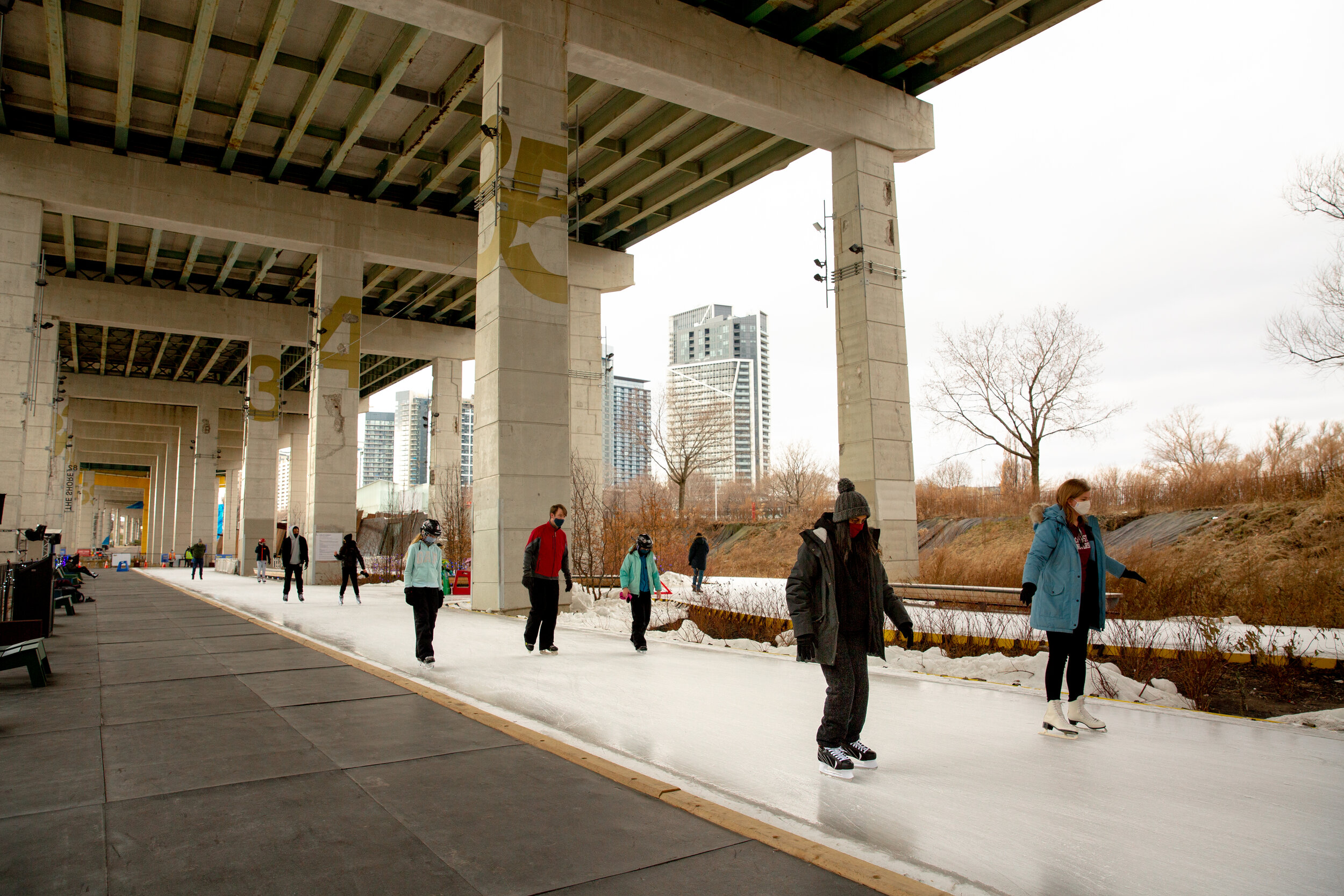The Bentway’s growing Safe in Public Space initiative broadens the definition of public safety, addressing new public health challenges and deep systemic inequities to build a new shared social contract for public space.

Ebti Nabag
Ebti Nabag examines how ideas of safety manifest and are communicated in public space through borders and boundaries, signs and symbols, public space architectures, and delineations.
Explore curated Safe in Public Space content by topic…

Shared Governance: A Democratic Future for Public Spaces
Bianca Wylie and Zahra Ebrahim argue that collective stewardship of our shared realms – online and IRL – can be achieved “though an ongoing, collaborative process of rule-making and modifying.

Universal Design: Transforming How We Think About Accessibility
Talli Osborne argues for a holistic understanding of accessibility, rooted in the lived experiences of people with varied levels of ability.

Double Duty: Re-Imagining the Public Value of Infrastructure
Agency—Agency's Tei Carpenter unearths the latent placemaking potential of urban infrastructure, from fire hydrants to safety bollards.

Carnival, Blackness and the Precarity of Public Safety
Sharine Taylor on the role of Carnivals in nourishing public health, cultural vitality and Black liberation.

Looking Back, Moving Forward: How Public Health Shaped Toronto
In order to understand how COVID-19 will influence Toronto’s future, we first must examine how public health policy established the city as we know it – along unequal lines – argues Bentway Fellow Nahomi Amberber.

Unhoused, Unwelcome? Public Space and the Stigma of Homelessness
Asante Haughton argues that public spaces need to be leveraged to support people experiencing homelessness.

Decolonizing Design: The Case for Universal Inclusivity
Mohawk architect Matthew Hickey argues that designing safer public spaces starts with broadening our definition of inclusivity.